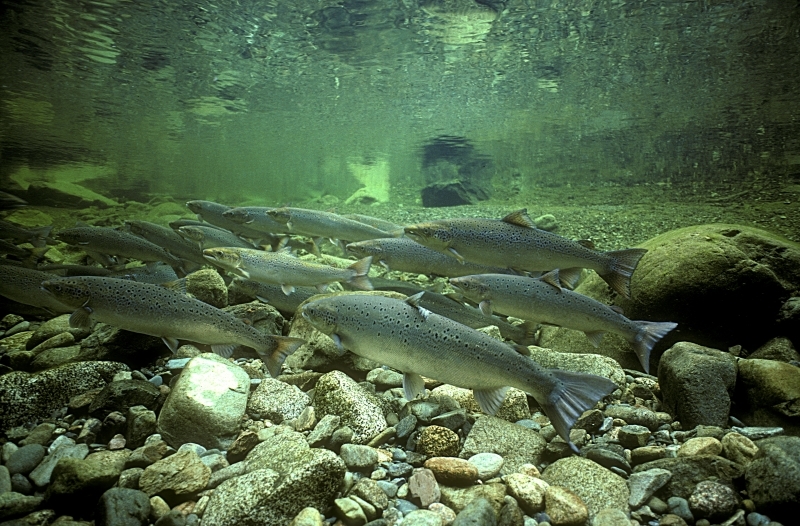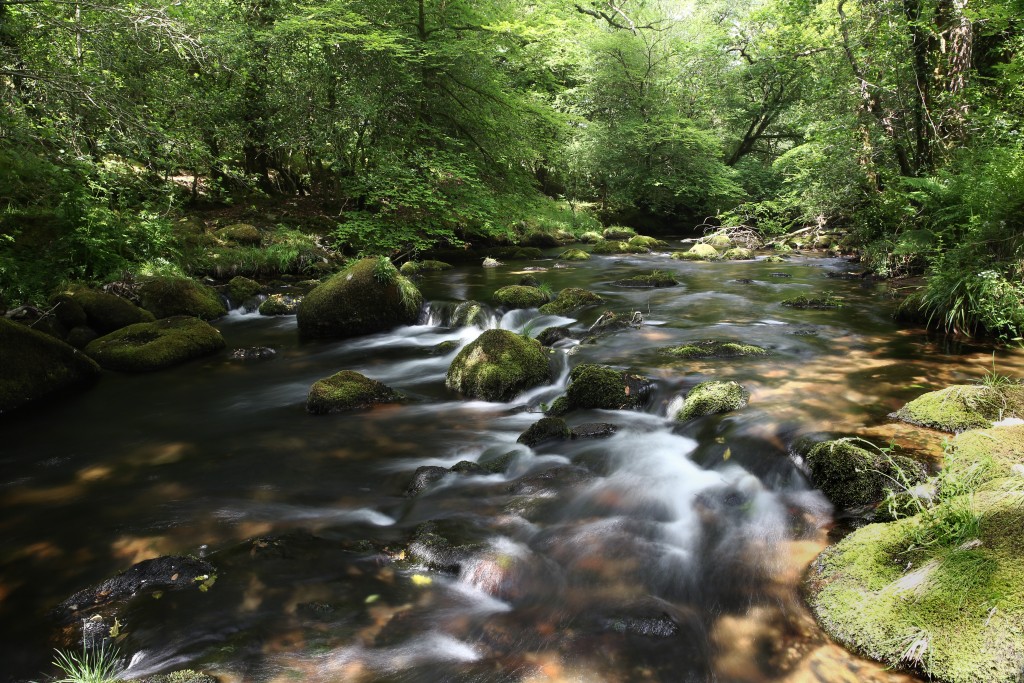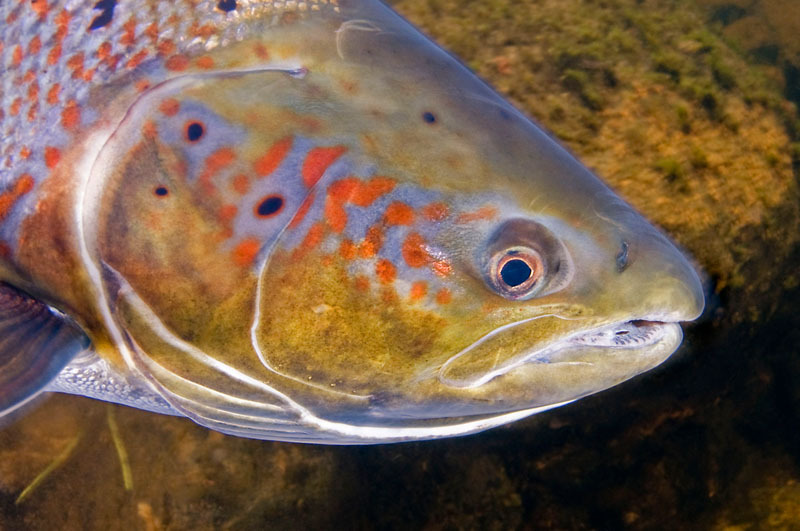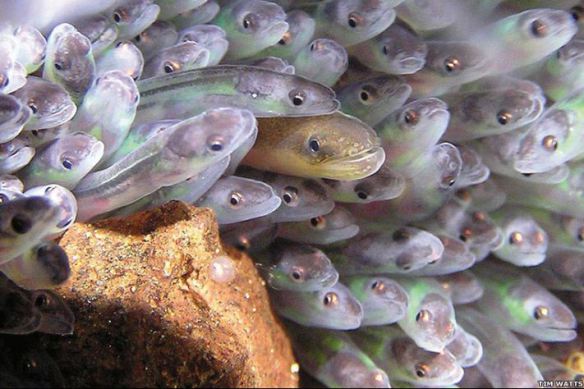On 21st May, individuals, communities and projects from around the world will come together and take part in a global initiative to create awareness about the importance of free-flowing, unobstructed rivers for migratory fish.
It’s a little known fact that fish need to travel up and down rivers, as well as between the river and sea, to reach spawning and feeding grounds or to find safe areas in times of drought or flood. Many species – including Atlantic salmon, European eel, sea trout and sea lamprey – migrate between the sea and river.
However, many of these species are in real trouble because of man-made obstacles like dams, weirs and sluices, which create barriers in the river that fish can’t navigate and prevent them from completing their essential journeys.
World Fish Migration Day (WFMD) aims to raise awareness about this issue, by encouraging organisations from across the world to hold events that connect fish, rivers and people.

Why does this matter?
In England, only 17% of rivers are considered healthy: pollution, poor habitat including barriers to fish migration, and too much water being taken from them are all to blame. Healthy rivers are essential for our society: we rely on them for water to drink and to nourish the food we eat, for flood protection, and simply as places to go to relax, unwind and enjoy nature. Think about a salmon leaping from the water’s surface or seeing the silvery flash of a grayling. Human intervention on rivers, such as weirs and sluices designed to help power the industry of our towns and cities, are now preventing us enjoying these natural wonders.
However, a river that cannot support healthy populations of fish is not healthy, and less likely to be able to provide the services we rely on.

Get involved
By taking part in WFMD you can help to raise awareness about some of these issues as well as support the actions needed to tackle them. For example, did you know there is an army of conservation groups in the UK installing fish passes on our rivers? These are designed to enable fish to move up and down the river – almost like a ladder in the water.
From river dips to fish passes, there’s something for everyone. You can:
- Join an existing event – check out the WFMD directory
- Organise your own event – a river visit, kayak or fish passage opening. Don’t forget to register it on the official website.
- Join in on social media – @fishmigration #WFMD2016
Our catchments are getting involved – there’s glass eel citizen science in the West Country, a planned eel release in Norfolk and a schools roadshow in the Severn. Keep an eye out for more information by visiting the WFMD directory, or checking individual websites:
- Westcountry Rivers Trust website for information about the Tamar
- Norfolk Rivers Trust website for information about East Anglia
- Severn Rivers Trust website for information about the Severn.
Beneath the surface
In celebration of WFMD, we’re shining a spotlight on two migratory species that have not fared well in recent years – the Atlantic salmon and European eel.
Atlantic salmon
Perhaps one of our most well-known fish, recognisable by the distinctive black spots on its side, the Atlantic salmon is anadromous: it hatches in freshwater, migrates to the sea and then returns to freshwater to spawn.
Atlantic salmon need cool, clear water to survive, as well as the ability to move up-stream and down-stream. However, since the 1970s, the numbers returning to spawn in our rivers have dropped by over 40%. Indeed, in many rivers, the iconic salmon runs have collapsed by as much as 80% over the last 20 years and many now fail conservation targets: 2014 salmon catches were the lowest on record.
They face threats from pollution, invasive species and barriers in rivers preventing their migration.

FACT: Atlantic salmon spawn in the gravelly headwaters of British rivers. They can navigate significant obstacles, such as waterfalls, to spawn. But they cannot jump over large man-made barriers like dams, which, therefore, prevent them from breeding.
European eel
The elongated, snake-like body of the European eel is unmistakable. Found in our rivers, canals, lakes and reservoirs, it is the only European fish to leave European rivers to spawn in the sea. Indeed, it undertakes one of the most extraordinary journeys seen in nature.
Hatching in the Atlantic Ocean’s Sargasso Sea, eels return to European seas as tiny larvae, where they turn into transparent ‘glass eels’ and then into elvers – at which point they start their journey into our rivers. This journey continues as they transform again into yellow eels and migrate further up our rivers, where they change once more into silver eels. Here, they could remain for over 70 years before beginning their journey back to the Sargasso Sea to spawn.
The eel was once abundant around the UK but it is now in trouble. Numbers have fallen so drastically since the 1980s (up to 95%) that it is considered a critically endangered species. Threats include pollution, over-fishing, illegal trade and barriers to migration.

Group of elvers © Tim Watts
FACT: The body of an eel is covered in slime, which helps to protect it from disease, escape predators and regulate the water content in its body.
